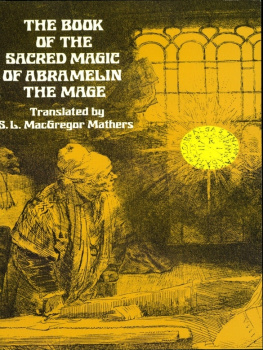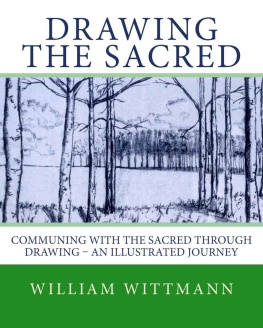PREFACE
The forests of Yucatan and Central America are to-day, for the majority of the people of the United States, even those who call themselves scientific and well informed, as much a terra incognita, as America was to the inhabitants of Europe before its discovery by Cristobal Colon in 1498, when for the first time he came in sight of the northern coast of South America, and navigated along it from the mouth of the river Orinoco to Porto Cabello in the Golfo Triste.
A few, having perused the books of J. L. Stephens, Norman, and other tourists who have hurriedly visited the ruins of the ancient cities that lie hidden in the depths of those forests, have a vague idea that there exist the remains of stone houses built some time or other before the discovery, aver authoritatively that "their builders were but little removed from the state of savagism, and that none of their handwork is worth the attention of the students of our age. Their civilization, they confidently say, was at best very crude. They were ignorant of the art of writing; and the scanty records of their history chronicled on deer-skins, in pictorial representations, are well nigh unintelligible. They had no sciences, no mental culture or intellectual development. They were in fact a race whose intelligence was for the most part of lower order. From what they did nothing is to be learned that has any direct bearing on the progress of civilization." In no wise can they be compared with the Egyptians or the Chaldees, much less with the Greeks or Romans; it is not, therefore, worth our while to spend time and money in researches among the ruins of their cities. It is to Greece, it is to Egypt, to Chaldea, that Americans must go in order to make new discoveries. In those countries must be established schools for study of Greek, or Egyptian, or Chaldean archology: and American schools have been established at Athens and Alexandria, and expeditions sent to Syria, to the shores of the Euphrates.
But the European scientists, who for many years past have explored those old fields in order to obtain relics to fill the shelves of the museums of their capitals and turned up the soil of the Orient in search of archological treasures, now look to the Western continent in quest of the origin of those ancient civilizations which they have been unable to find in the countries where they once flourished; and they look with that reverence which true learning begets, on those ancient American temples and palaces that are objects of contempt for some modern American scientists.
Thus we see established in Paris the "Socit des Amricanistes" whose sole object is the study of all things pertaining to ancient American civilization. That Society, composed of students, spares no efforts to obtain knowledge respecting the architecture, the sciences, the arts, the language, and the civilization of the people who inhabited, in remote ages, the various countries of this Western continent. A premium of 25,000 francs has been offered for the discovery of an alphabet or key to the inscriptions carved on the walls of the monuments in Yucatan and Central America. M. Dsir Charnay has been sent to obtain molds of the sculptures and other precious relics that lie hidden and lost in the recesses of the Central American forests. Casts have been made from such squeezes as he obtained. These casts adorn the Trocadero Museum at Paris, duplicates of the same having been presented to the Smithsonian Institute at Washington by Mr. Pierre Lorillard of New York. This gentleman is the only American who has ever contributed with his wealth and influence (he has spent 25,000 dollars) in expeditions for the recovery of facts and objects that may throw light on the ancient history of America.
Then again we have in Europe the international "Congrs des Amricanistes" that convenes every four years in one of the capitals of Europe for the purpose of collecting all new data, obtained in the interval, concerning ancient American civilization.
In England, at Cambridge, there is in the University a large building especially dedicated to Central American archology. There are to be seen, as I am informed by General Sir Henry Lefroy, the casts and photographs obtained by Mr. Maudslay, a wealthy gentleman who has devoted his time and wealth to the work of obtaining fac-similes in plaster and photographs of the ancient monuments of Honduras and Guatemala.
But what have we in New York, in the United States, in fact, to offer to students of American archology?
True, Mr. George Peabody, among his many benefactions, left a sum of money for the foundation of a museum to be specially dedicated to the collection of objects pertaining to American archology. Such museum exists at the University of Cambridge, Massachusetts. It bears his name. Does it contain anything that may throw light on the history of the ancient inhabitants of this Western Continent? I once wrote to an influential gentlemen connected with the University asking him to propose to the trustees the purchase of a copy of my collections of casts and mural paintings. His answer dated July 23d, 1885, was: "I will send your letter to one of the trustees, enjoining him to accept its offer, but I fear they will treat that proposal as they have so many others and say no! The collection of tracings they ought to secure. The time has come when such things should be got at any cost. We shall soon be as they are in India, hunting everywhere for things which were easily to be had a few years ago."
My correspondent has visited the ruined cities of Yucatan; he knows the value of my collections.
I have done all in my power to call the attention of American scientists, of the men of leisure and money, to the fact that in New York perfect fac-similes of the palaces and temples of the Mayas could be erected in Central Park, both as ornament to the place, and object of study for the lovers of American archology who may not have the means, nor the time, nor the desire, to run the risk of submitting to the privations and hardships that those who wish to visit the ruined cities, must inevitably encounter.
But alas! all in vain.
Three years ago I had casts made from some of the stereotyped moulds made by me of the sculptures at Uxmal and offered them for exhibition in the Metropolitan Museum of Art in Central Park. They have been placed in the cellar, out of the way, "for want of space against the wall." The public has never seen them. I once remonstrated with one of the trustees, and proposed to sell to the museum a copy of the collection of fresco paintings from Chichen Itza, last remnants of ancient American art. The answer of the gentleman was "No! those things are not appreciated, they are looked upon as of no value." Nevertheless, some of the illustrations in this book are photographs of the same despised casts and mural paintings.
During the last lecturing season I offered to several literary, scientific and historical societies, to give lectures illustrated with views made by us of the monuments, and enlarged with the stereopticon. In every instance I received the same answer. "Our people are not interested in such a subject." What! Americans not interested in American antiquities! in ancient American history! in ancient American civilization!
Desiring to make the subject known before the lecture season was over, en desespoir de cause, I asked Dr. John Stoughton Newbury, of the School of Mines at Columbia College, if he could give me a chance to present the subject before the members of the New York Academy of Science. I had no hope of a favorable answer; but to my great surprise Professor Newbury received my offer enthusiastically. Mrs. Le Plongeon lectured on the monuments of Yucatan on the 2nd of March last, at Columbia College. Let the ladies and gentlemen who were present say if the facts and views presented to them were of sufficient interest to command their attention. A lady, Mrs. Francis B. Arnold, residing at 21 West 12th Street, New York, was so pleased that she asked Mrs. Le Plongeon to lecture at her own house to a select party of friends. Let again the ladies and gentlemen who were present at Mrs. Arnold's house, say if there is nothing worth seeing and studying in the remains of ancient American civilization.

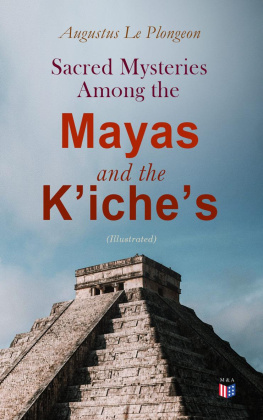
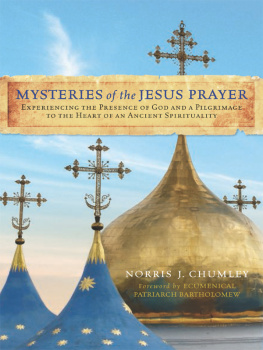

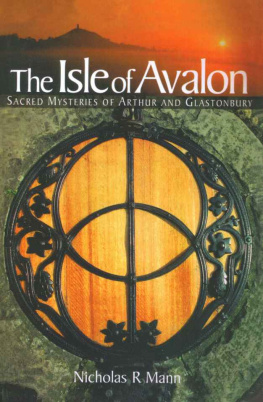
![Mother Louise Margaret Claret - The Sacred Heart and the Priesthood (with Supplemental Reading: Devotion to the Sacred Heart) [Illustrated]](/uploads/posts/book/269773/thumbs/mother-louise-margaret-claret-the-sacred-heart.jpg)
